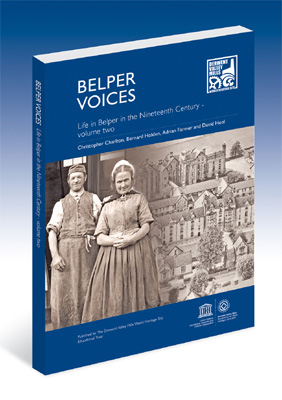
Here is the story of Matlock Bath from its origin in the late seventeenth century to the recent past. At first, a remote rural spa, a century later, though still no more than a small village, its awesome scenery and mineral springs had become so highly regarded by fashionable visitors that it was spoken of alongside Bath, Buxton and Tunbridge Wells.
These years also saw the creation of Masson Mill, the most elegant of Sir Richard Arkwright's many cotton mills; the book records both its early development and its renaissance at the end of the nineteenth century in the hands of J.E. Lawton, the man who was also instrumental in the formation of the English Sewing Cotton Company, the combine which ensured the survival of the mills in Matlock Bath, Belper and Milford into the 1990s.
Matlock Bath's success as a pedigree spa was short-lived. Inexorable decline was brought to an end by the arrival of the railway in the 1840s. The new visitors it brought, the day trippers, enabled the resort to reinvent itself, now as a popular day out destination, the role it continues to perform today. Much of Matlock Bath's heritage was lost in the A6 road widening of the 1960s, much more remains. The elegant parades in harmony with the course of the river and its gorge; the villas which adorn the wooded slopes; the Lover's Walks and the Heights of Abraham, this rich inheritance is all a reminder of the Bath's celebrated past when briefly it walked upon the national stage.
The book is generously illustrated, reproducing historic prints and paintings, photographs and advertisements selected from a range of local and national collections.

This is the Trust’s second book devoted to life in Belper in the nineteenth century. Thanks to the Trust securing generous financial support it is substantially larger than its predecessor. It retains the format that has become a hallmark of the Trust’s publications with copious illustrations and extensive quotations from contemporary sources. There is much in the book that breaks new ground. It features the extraordinary contribution to the development of the town, its administration and the shaping of its essential services by three generations of the Pym family. Other chapters describe the strategy the young town adopted to look after its poor creating a patchwork of individual philanthropy and self help while for those who sank into absolute poverty there was the workhouse. The building of the Belper Workhouse ( known now as the Babbington Hospital ) is described in detail. This account is accompanied by episodes from its later life as the Guardians who administered the Poor Law struggled with the challenges of unwelcome commands from London and disagreements within their own ranks as to where help was to be given. Should they, as the honourable Frederick Strutt demanded, deny money to the wives and families of men who were in prison? How the Guardians responded to this and many of Strutt’s other propositions is all in the book.
View details...
This is the first of two books describing life in Belper in the nineteenth century. These were the years that saw the town establish itself within the county as an administrative centre and, with its early railway connection, a flourishing horse-nail industry, and the seemingly inexorable growth of the Strutts' empire, what could go wrong? But the railway didn't bring investment; handcrafted nails were overtaken by those made by machine and then by imported products; and the mills contracted and were sold. The growth of the town stalled.
View details...